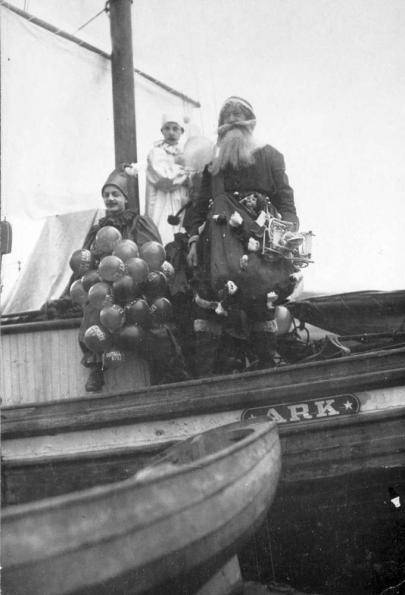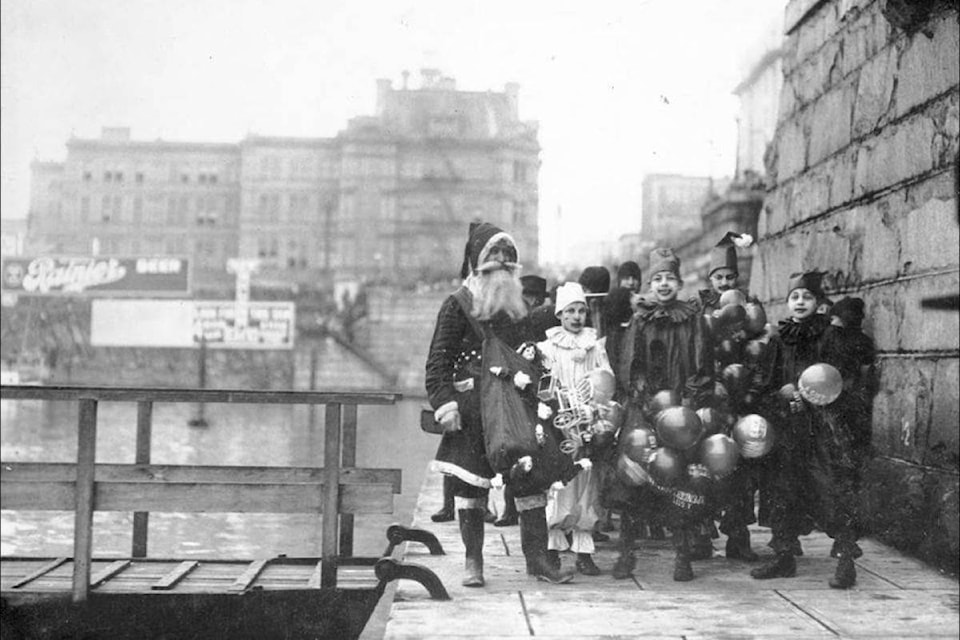By Nancy Demwell, Delta Museum and Archives Society
Santa Claus was just coming into vogue in North Delta in 1917. An already-popular Christmas hero in the United States, magazines and radio popularized the Santa that we know and love today. Prior to the jolly elf that slides down the chimney while children sleep, there was the English Father Christmas who rode a white horse and the Norwegian Julenisse, a short mythical creature similar to a gnome.
In North Delta, church- and lodge-sponsored children’s Christmas parties would have the good old Christmas elf arrive with great fanfare via fishing trawler or in a sleigh or wagon drawn by a horse with deer antlers tied on its head. For school Christmas pageants, the one room schoolroom was divided by a rope and hanging blankets to make a theatrical stage. Children would recite poetry, sing carols and — as was popular in 1917 — perform in a still life depicting a famous painting or the nativity scene.
North Delta’s predominantly Norwegian settlements of Annieville and Sunbury celebrated Christmas on Christmas Eve. While families were enjoying Christmas dinner, Santa would sneak in to lay gifts under the Christmas tree. After the meal, presents were opened and the children’s stockings were explored.
Conveniently, after all the children were in bed, Father Christmas was available at midnight for the North Deltan’s of British heritage, and those children would find their stockings full on Christmas morning.
Christmas stockings would contain a few pieces of candy and a Japanese orange, plus a lump of coal stuffed in the toe. The orange has been a holiday tradition since 1891 when the Canadian Pacific Railway’s Empress of Japan began sailing its Silk ships from Asia. The lump of coal was a remembrance of when only coal and straw were put in naughty children’s stockings instead of candy. By 1917, the coal was just an addition for the fire.
In some 1917 homes, a place was set for an absent soldier fighting in the trenches of the First World War, and there would be many British flags placed on mantles and Christmas trees. Parcels were sent to the front with hand-knitted socks and sweaters, and tins of Christmas cookies and cakes. Sometimes these parcels wouldn’t arrive until months after Christmas, but they were precious gifts from home whenever they were received.
At home, gift giving was more moderate in 1917. There were knitted mittens and crocheted pot holders, hand-me-down boots or shoes, whittled boats and homemade cloth dolls with button eyes. Children would receive useful gifts like an axe or a notebook and — if the family could afford it — toys or new clothes ordered from the Eaton’s catalog.
Charity and goodwill were an important part of the Christmas season in North Delta. The bachelors of the community were hosted by the many of the families celebrating Christmas. The Japanese and First Nations fishermen were served Christmas pudding by their Christian counterparts on Christmas Eve, and their children were given candy. With respect to the sacredness of the holiday, no fishing was done by anyone on Christmas Day.
Nancy Demwell is a board member with the Delta Museum and Archives Society.

